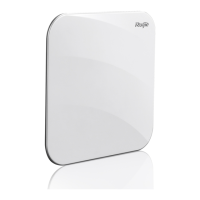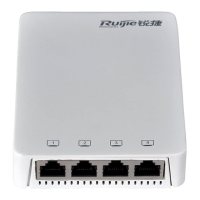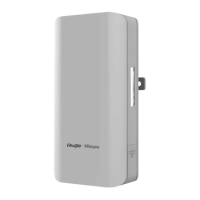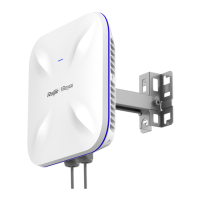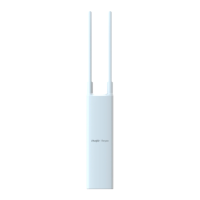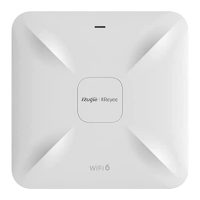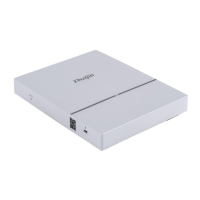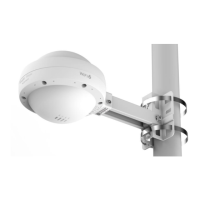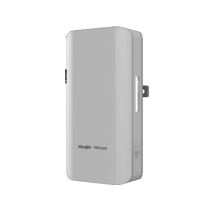Configuration Guide Configuring Band Select
whether the STA sends two frames within the same scanning cycle or sends the two frames in two consecutive scanning
cycles. If the AP sets the minimum scanning cycle of the STA to 200 milliseconds, the two frames are considered to be
sent within the same scanning cycle because their interval is shorter than 200 milliseconds. The probe count of the STA
on the AP is 1. Since the specified minimum scanning cycle (200 milliseconds) and the actual scanning cycle (150
milliseconds) are different, the counts are also different. Assume that the STA performs scanning for three consecutive
cycles, the count on the AP will be 2 because the first two cycles are considered to be one. However, this problem does
not cause inconvenience to users.
The probe count of an STA reflects the negativity of the response. This parameter indicates that an AP sends one
response after an inhibition STA performs active scanning for multiple cycles. For example, if the default value is 2, the
WLAN on the AP sends a Probe Response frame after the STA performs scanning for two consecutive cycles.
2.3.3 Rejecting Accessing the 2.4 GHz Band
The Band Select function controls only the active scanning of an STA, but cannot prevent the STA from discovering
a 2.4 GHz WLAN through passive scanning. Therefore, some dual-band STAs can still discover 2.4 GHz WLANs
and attempt to access the WLANs. In this case, the Band Select function may fail.
The Band Select function can reject 2.4 GHz access requests from dual-band STAs to improve the chance for dual-band
STAs accessing the 5 GHz band.
Rejecting a dual-band STA's 2.4 GHz access request helps facilitate the Band Select function; however, the Band
Select function cannot be 100% successful.
Working Principle
After an STA discovers a WLAN for a user to access the WLAN, the STA sends an Authentication Request to the AP at
first. Then, the AP sends an Authentication Response to permit or reject the STA's authentication request.
The Band Select function processes the Authentication Request. If the Authentication Request is sent by a dual-band STA
at the 2.4 GHz band, the function can reject the Authentication Request until the dual-band STA sends an Authentication
Request from the 5 GHz band. Thus, the STA is led to access the 5 GHz band.
Generally, when a dual-band STA searches for access, the STA sends one or more Authentication Requests at a band
and waits for responses. If the STA does not receive responses or fails in access, the STA sends Authentication Requests
at the other band and waits for responses. However, some dual-band STAs send Authentication Requests only at the 2.4
GHz. For high availability, you can use the Band Select function to set the rejecting count for a dual-band STA.
Assume that a dual-band STA sends Authentication Requests for M times before changing the band, and the rejecting
count is set to N. If the dual-band STA attempts to access the 5 GHz band at first, the STA can access the 5 GHz band
immediately. If the dual-band STA attempts to access the 2.4 GHz band at first, the STA can access the 5 GHz band only
if N is equal to or greater than M; otherwise, the STA accesses the 2.4 GHz band. No matter which band a dual-band STA
accesses, if the dual-band STA attempts to access the 2.4 GHz band at first, min (smaller one between M and N)
Authentication Requests are rejected or ignored. As a result, the STA's access is delayed. The delay time depends on the
driver of the STA. For example, if the STA sends Authentication Requests at the interval of 100 milliseconds and four
Authentication Requests are ignored, the access of the STA will be delayed for 400 milliseconds.
When the Band Select function rejects the access request of a dual-band STA while another access control module
such as load balance accepts the access request, the STA will still gain access. This is because the Band Select
